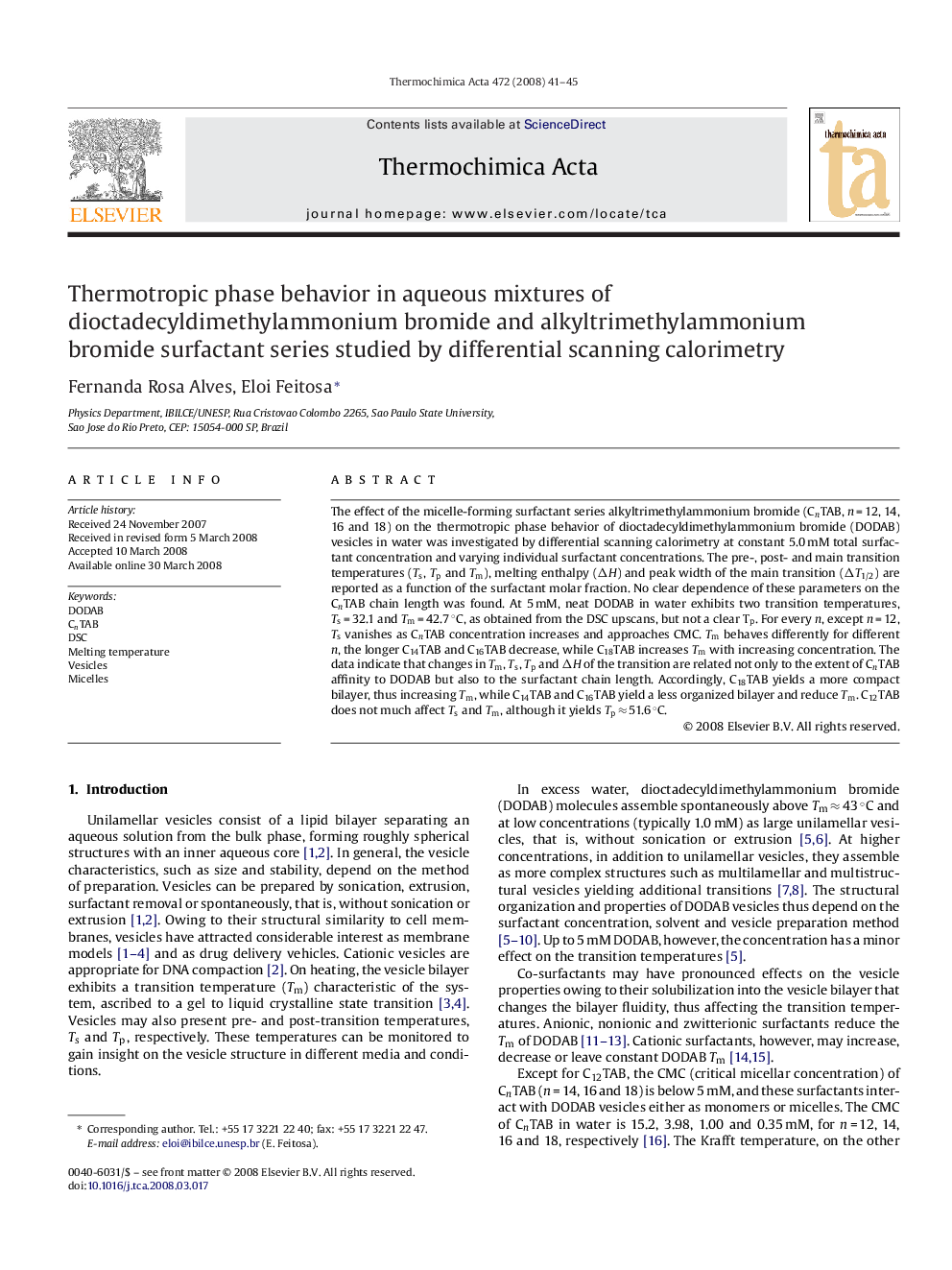| Article ID | Journal | Published Year | Pages | File Type |
|---|---|---|---|---|
| 675497 | Thermochimica Acta | 2008 | 5 Pages |
Abstract
The effect of the micelle-forming surfactant series alkyltrimethylammonium bromide (CnTAB, n = 12, 14, 16 and 18) on the thermotropic phase behavior of dioctadecyldimethylammonium bromide (DODAB) vesicles in water was investigated by differential scanning calorimetry at constant 5.0 mM total surfactant concentration and varying individual surfactant concentrations. The pre-, post- and main transition temperatures (Ts, Tp and Tm), melting enthalpy (ÎH) and peak width of the main transition (ÎT1/2) are reported as a function of the surfactant molar fraction. No clear dependence of these parameters on the CnTAB chain length was found. At 5 mM, neat DODAB in water exhibits two transition temperatures, Ts = 32.1 and Tm = 42.7 °C, as obtained from the DSC upscans, but not a clear Tp. For every n, except n = 12, Ts vanishes as CnTAB concentration increases and approaches CMC. Tm behaves differently for different n, the longer C14TAB and C16TAB decrease, while C18TAB increases Tm with increasing concentration. The data indicate that changes in Tm, Ts, Tp and ÎH of the transition are related not only to the extent of CnTAB affinity to DODAB but also to the surfactant chain length. Accordingly, C18TAB yields a more compact bilayer, thus increasing Tm, while C14TAB and C16TAB yield a less organized bilayer and reduce Tm. C12TAB does not much affect Ts and Tm, although it yields Tp â 51.6 °C.
Related Topics
Physical Sciences and Engineering
Chemical Engineering
Fluid Flow and Transfer Processes
Authors
Fernanda Rosa Alves, Eloi Feitosa,
